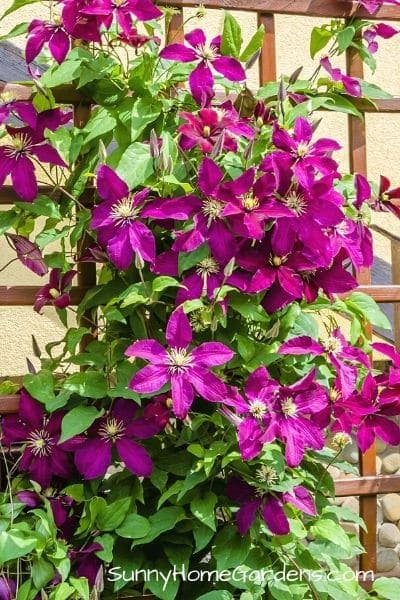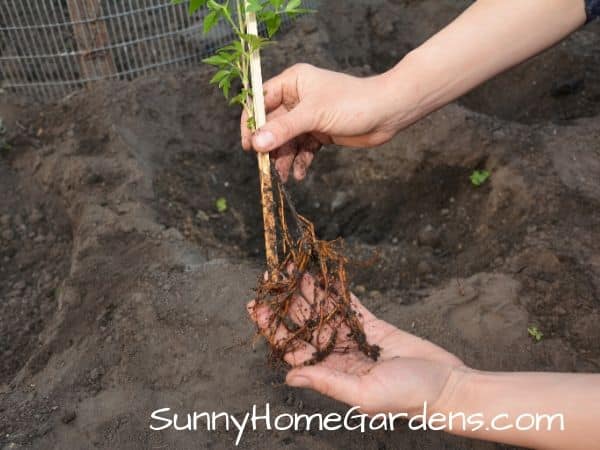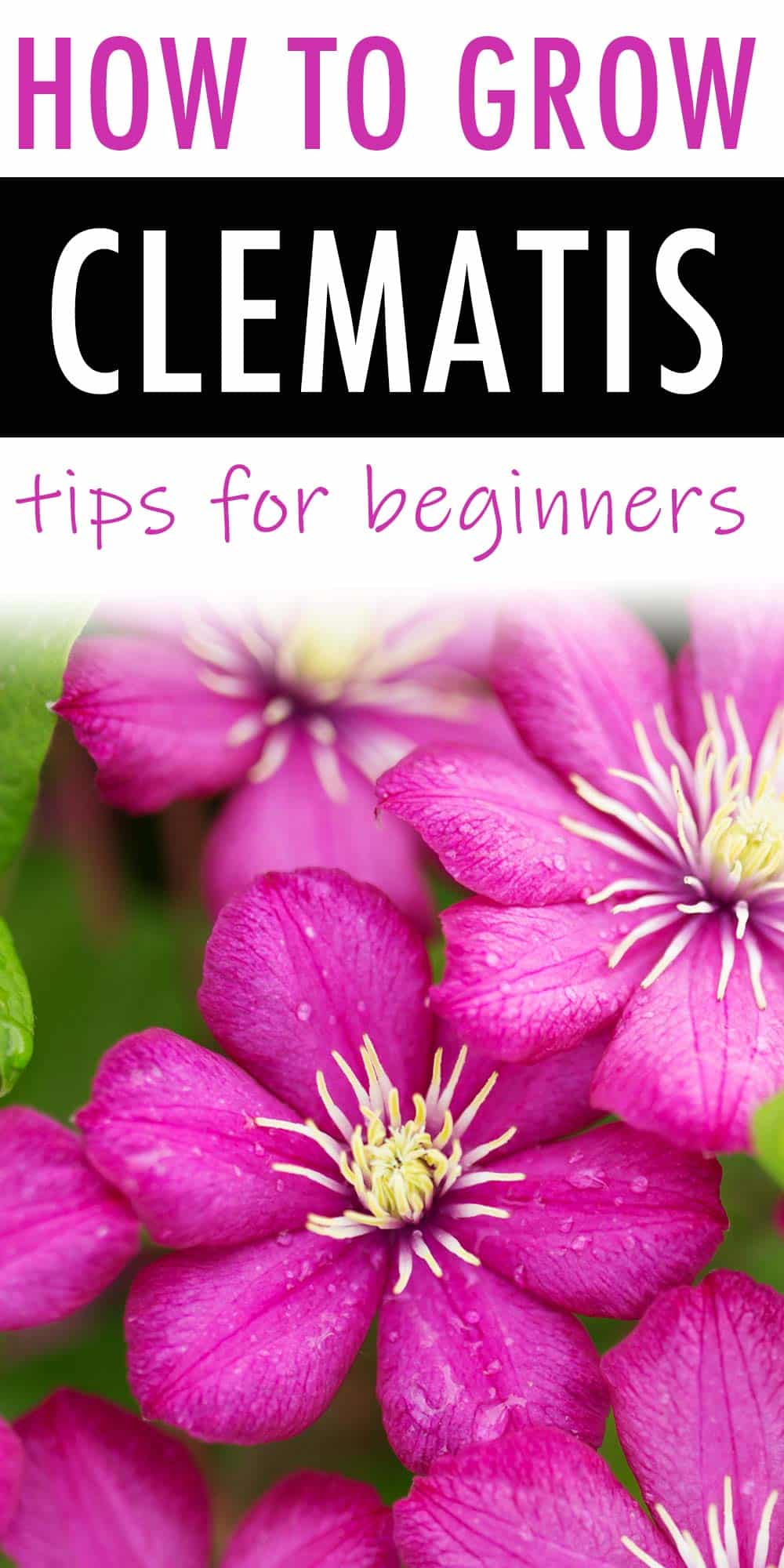If you have a flower garden, you are most likely already familiar with clematis. It has about 300 species and is part of the buttercup family.
The clematis plant is one of the most popular and most attractive flowering vines to take care of in a garden. They come in different forms, colors, and blooming seasons.
While some are small and delicate, there are also larger sizes, too. Plus, there are many varieties that fill the air with their sweet fragrance.
Every gardener should know the pleasure of growing clematis in their garden. It’s also known as the “queen of the climbers”. If you’ve never cared for them or want to learn more about growing them, then this is for you!
Caring for clematis in your garden is easy. Here are some tips and tricks for how to grow and enjoy them in your garden.
Table of Contents
How to Grow Clematis
What Are The Best Things About Clematis?
These long-blooming flowers come in different sizes, ranging from delicately small to very large flowers that reach a few inches to a foot in diameter.
Clematis are easy to manage.
These flowers produce different fragrances, depending on the variety.
Clematis can grow on shrubs, on a trellis, up trees, and even across rocks and garden beds.
New plants can be grown from cuttings, seeds, and layering methods.
Some Important Things To Note When Growing Clematis
They have delicate stems that can easily bend and break.
Lepidoptera caterpillars tend to eat the leaves.
You may see Japanese beetles eating the flowers.
Watch out for fungal diseases. They can strike quickly and kill the plant.
If not taken care of, the stalks can grow into a tangled mess.
Newly planted vines will not bloom for two to three years.
When to Plant Clematis
The best time to transplant or move a clematis is when it is dormant.
This could be in early spring before leaves have appeared or it could be in the fall after the leaves have fallen off.
Where to plant Clematis?
Your flowering clematis vine will be healthy and thrive if you choose to plant it in the right spot.
Clematis Sun or Shade?
Choose a spot where the plants can have access to full sun. In order to bloom, clematis need at least six hours of direct sunlight every day.
Clematis Soil
Make sure that the location also has well-draining and fertile soil. There should be room for the roots to spread, without direct competition from the other plants in the garden.
Watch out for any hot spots near where they are growing. Clematis will not tolerate drying out. Avoid planting next to a wall as it will reflect heat. This will result in overheating and the drying out of the soil. If you choose a spot next to a wall, make sure to water the plants regularly, especially during the warmer months.
Clematis Trellis
Make sure your clematis vine has a trellis. You need to make sure that the vines of your clematis have something to grab onto.
Before you start planting, you need to think about how you want to train your plant. Clematis can grow across the ground, up a trellis or support, or on top of other shrubs and trees, as long as their roots are not directly competing for nutrients.
It’s a good rule of thumb to set your trellis up in place even before you begin planting your clematis. Any adjustments to the supporting trellis once the plants are blooming, can hurt the plant.
The vines will need your guidance in order for them to grow properly and in the direction you would like to see them go. Their tendrils will grab onto anything they touch but without any support available, they will start to wrap around themselves and tangle. This can break the stems as well as make a tangled mess to try and repair later.
How To Plant Clematis
The roots and vines of the clematis are fragile. If treated roughly, they likely won’t recover well, so you need to handle the plant gently and with a lot of care.
If you choose to purchase an already established vine in a pot with a small trellis support, it needs to be planted by two people. The stems and tendrils can be very delicate and easy to break, even when bent. You need to snip off some of the stems to detach it from the trellis.
You will then need to keep the stems in place and have someone hold the plant up as you remove the pot.
Before you start planting, soak the root ball for about 20 minutes in a pot or container with warm water.
Dig a hole in your garden double the width of the root ball. Place your clematis no deeper than the soil level. Then, place a larger trellis so that as your plant grows, the vines will have something to grab.
Make sure to water your clematis vine after planting.
If you notice your clematis look as though it has suddenly died within a couple days of planting, continue to water it. This is clematis wilt and it’s from the shock of transplanting.
There is a chance your clematis will come back the following year. Another thing you can try doing is to shield the plant a bit from the sun if it’s really hot out.
Can You Plant Them In Containers?
Yes, you can plant and grow these plants successfully in containers.
If you have limited space and choose to grow clematis in pots, you need to choose a rather large pot.
Fill the container with a combination of organic potting mix and organic compost. The mixture should be free of synthetic fertilizers and moisture beads.
How Fast Does Clematis Grow?
Since clematis is a perennial, it will come back to life every year. However, caring for clematis takes a lot of patience.
During its first year, you might notice that there is not much going on. These plants need at least two to three years in order to become established and begin to flourish. They have complex root systems that take time to fully develop and thrive.
Watering
Unlike other plants that require careful watering at the beginning of their growing period and then less once they become established, you’ll need to watch your clematis throughout its entire growing season and make sure to maintain proper moisture.
These plants cannot survive in dry soil so keeping an eye on the moisture level is an important part of making sure this plant flourishes. Also when you do water, be sure to water the soil, not the top of the plant.
To check the moisture level of the soil, especially during hot weather, press your finger into the soil or you can use a moisture meter. If it’s dry to the touch 1 inch down into the soil, it needs watering. You can also set up a self-watering system.
Fertilizing
Clematis requires special instructions in terms of fertilization. They will need to be fertilized with a water-soluble fertilizer every six weeks during their young plant stage.
For already established plants, you can use a slow-release fertilizer.
Pruning
You also need to make sure to prune your clematis.
Pruning removes the dead, damaged, and even the diseased branches.
However, when pruning your clematis, you need to be careful not to remove the healthy buds. Making a mistake when pruning can cause the plant to not begin flowering for one more year.
My Clematis Is Not Flowering: What Am I Doing Wrong?
There are different reasons why your plant may not be not producing any flowers:
Imbalanced nutrition due to over-fertilizing. If you notice that the vine has a lot of green growth, it might be overloaded with nitrogen. Use an organic, slow-release fertilizer with less nitrogen.
Inadequate light. Although these plants can grow even with partial shade, they cannot produce flowering buds without full sun.
Improper pruning. You might be too eager in removing the dead and damaged parts of the plant that you are accidentally removing the flowering buds.
Too young. Although some varieties can bloom during their first year, most clematis can take up to five years to produce their first blooms.
How Do You Propagate Clematis?
Propagate by Seeds
If you want to grow new clematis plants from seeds it can be a long and slow process. The germination process takes about six months up to as much as three years.
Place the seeds in a small pot of soil with a small layer of sand or soil over the top of them.
You need to keep the seeds moist in a dark and cool area like the back of your refrigerator. Check on your seeds periodically, until they germinate.
Propagate Clematis by Layering
Another way to begin growing this vine is to propagate with a cutting or by layering.
Put potting mix in a 3 inch pot then water it thoroughly.
You’ll need to take the green stems of an already established vine (which is about two years old or older) and slice the stem. Add rooting hormone to this sliced part
Place the stem in the prepared pot with potting mix, cover with the potting mix and weigh the stem down with a stone until they start to root. You can place up to four prepared stems in one pot.
Maintain the dampness of the soil. If the air is too dry, cover the plants with a ziplock bag.
What Diseases Do Clematis Get?
There are a number of diseases that you be aware of when caring for clematis in your garden. When not treated properly, these diseases can infect or kill the vines:
Leaf spot that appears as large spots on the leaves of your plant.
Powdery mildew on the leaves, looks like someone sprinkled baby powder on the leaves.
Rusts that appear like yellow spores in the leaves.
Tomato ringspot virus that causes yellow leaves.
Root rot that starts from the soil, causing the plant to wilt.
To prevent these diseases, you need to use fungicides. Always inspect the vines on a daily basis.
Once you notice that the leaves start to wilt, cut the vine down to the ground.
They are beautiful and can fill your garden with wonderful scents. Knowing all of the tips and tricks above will ensure that your clematis will thrive and flourish in any garden bed. Have you grown them in your garden? What are your favorite varieties? Do you have any tips to share?






